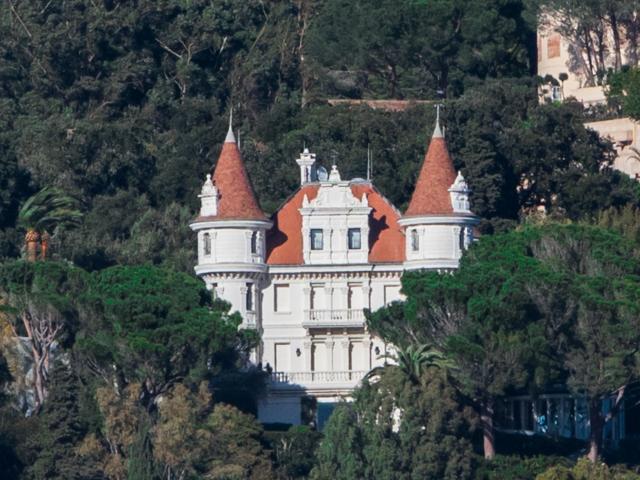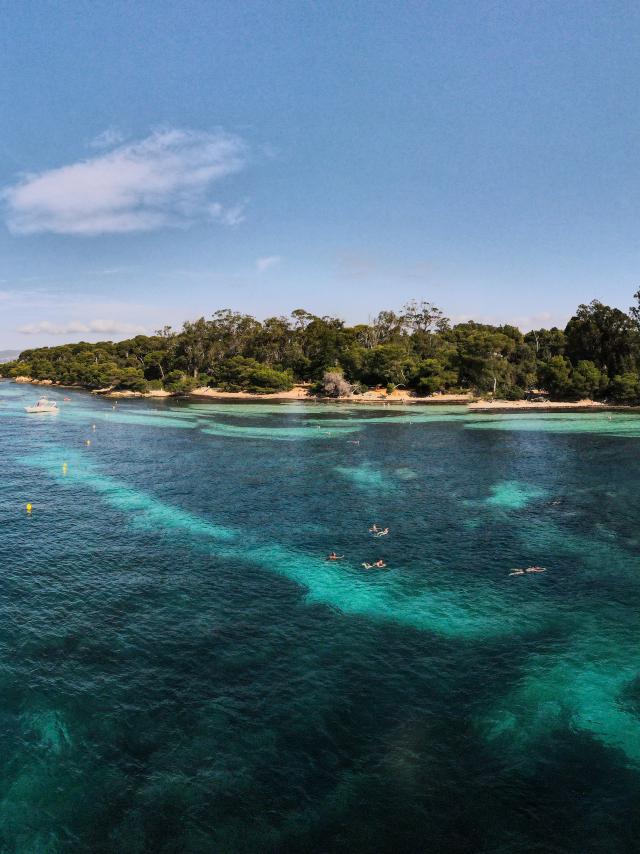

Cannes, celebrity
Engraved in the stone
The intense charm of the Suquet
The historical centerOverlooking the harbor and the Forville market, the Suquet is the historical heart of Cannes, its oldest walls dating from the 10th century. This thousand-year-old district shines today by its character and its animation.

Totally and superbly rehabilitated, this district of Cannes knows a new craze, living at the rhythm of art with in particular the creation of a residence of artists baptized the Suquet des Artistes. The sloping streets have kept their charm of yesteryear. It is born from some details: the faded walls of the old low houses formerly inhabited by the fishermen, the ogival doors which open on old sheds very appreciated today by the tradesmen, the vaulted passages, the shaded squares, the hidden steep staircases…
Notre Dame d’Espérance church
In addition to these little things, there are beautiful traces of the past and the first glimmers of the city on this natural promontory. The church of Notre-Dame-d’Espérance stands in the heart of the district. It was built in 1627 when the city had barely a thousand inhabitants!
The old castle and its Tour Carrée
A few meters away, the old castle, rare traces of the Middle Ages, host of the Musée des Explorations et du Monde and its Square Tower built in the 10th century to be completed at the end of the 14th. Twenty-two meters high, it offers an exceptional view of the city, its bay and much of the region.


The beautiful houses of Cannes
The imprint of an exceptional destinyVillas built by charmed aristocrats
Rich of a formidable cosmopolitan history with aristocratic accents, the past of Cannes was not only built around the old town, the Suquet, and the Croisette… It was played out on two hills opposite each other, the Croix des Gardes and the Californie.
Since the 19th century, these two neighborhoods have been home to the resorts of queens and kings, tsars and princes, maharajahs and emirs, artists and stars… Between 1850 and 1900, many palaces and noble residences were built, competing in architectural prowess and splendor.

Amazed in their turn, the English aristocrats, then later the Russians and the Americans, discovered Cannes in winter and built, from the Croix des Gardes in the west to the district of California in the east, imposing residences. Some beautiful buildings of this fabulous time remain, it is enough to know how to look at them.
Nowadays, the beautiful residences of the hills of Cannes are magnificent private villas, contemporary of great architectural firms to discover too!

Did you know that?
The Villa Rothschild welcomes today the Médiathèque Noailles.
You can have free access to this exceptional residence (at the opening hours of the media library) built by Baroness Betty de Rothschild in 1881. The villa and its garden, both listed as historical monuments, have a rich history and bear witness to the splendour of Cannes’ resort at the beginning of the last century. The gardens contain exotic plant species imported by aristocrats of the time who competed in originality, each year they are the scene of creations within the Festival des Jardins de la Côte d’Azur.
The Orthodox chapel
To the east of the city, it was Alexandra Feodorovna Skrypitzine, wife of the French consul in Moscow, Eugène Tripet, who brought the entire Russian aristocracy with her. Although there is no trace of their sumptuous residence, there is still a magnificent Orthodox chapel of Saint Michael the Archangel, with a gold and azure dome, on Boulevard Alexandre III. It was erected by Eugène Tripet in honour of his wife.
On Avenue du Roi Albert, a real tour of the “old Cannes residences” begins, with the monumental Villa Kazbeck which, as early as 1895, was home to the Grand Duke Michel of Russia and his wife the Countess Torby, founders of the Golf de Cannes…

Hotels and casinos
From the Belle Epoque to the Roaring TwentiesGrand hotels in constant evolution
From the end of the 19th century, due to the success of the destination, many hotels and leisure establishments were built. While some of them became co-owned, others continued to operate as hotels:
The old house of Maupassant
The current “Chalet de l’Isère” hotel was the home of Guy de Maupassant, located on the heights, overlooking the Old Port, where he watched from his windows the “Bel Ami” moored in the port.
The “Chalet” was born from an architectural trend, first British and then imported by the English colony in Cannes, which consisted in building residences taking the form of mountain chalets in the city. They responded to an ideal of a return to simple dwellings, allowing a direct relationship with nature with a garden. Built in 1842, the “Chalet de l’Isère” is one of the oldest, Guy de Maupassant settled there in 1888.
The old casino Palm Beach
If the big hotels were the places of balls, for the entertainment of celebrities and crowned heads were also built casinos. In 1929 the Palm Beach Casino, then called the Summer Casino, built in an art nouveau and Moorish style, was one of the main party places, at that time baths were becoming fashionable. Today it is no longer used as a casino, but it is currently being transformed into a complete entertainment venue and the building should be restored to its former glory.


The Villa Domergue
Every summer, from July to the end of September, the town organises guided tours of one of the most beautiful jewels of its heritage: the Villa Domergue. A unique opportunity to feel and understand the Cannes social scene of the Roaring Twenties. This is because the former Villa Fiesole was the home of one of the figures of this period: Jean-Gabriel Domergue.
This man from Bordeaux, adored by the Parisian elite who loved his portraits, loved above all to paint women, elegant and sensual. Glamour, always! “I am the inventor of the pin-up”, he liked to say.
Are ladies more beautiful under the Côte d’Azur sun? He settled in Cannes in the 1930s, building a large villa inspired by the Mediterranean, combining the Italian Renaissance with the Provençal style. A little jewel that he arranged and decorated with a rare talent to make it one of the most beautiful residences of his time. For her part, Odette, his wife, a sculptor, modelled the earth, designing the gardens, multiplying the pools and waterfalls, imitating in particular those of the famous Villa d’Este. In 1973, this Eden was bequeathed to the city of Cannes, which has since organised exhibitions there.

Cannes avant-garde

The Villa Romée
Although built in 1928, it was a complete break with the traditional style of the time. Its architect, Georges Henri Pingusson, was inspired by the nascent industrialisation of aviation and boating. He was a representative of the modern movement and worked with Le Corbusier on several projects. The villa was listed as a historical monument in 1994. It is managed by an association of architects who restored it in 2002 after 14 months of work. It is now the Maison de l’Architecture where conferences are organised.
The Palais des Festivals et des Congrès
Built in 1982 by the architects Sir Hubert Bennett (London) and François Druet (Biot). It has been controversial since the 1st Film Festival, because of its modern architecture, which breaks with the municipal Casino which preceded it and with the old Palais des Festivals built in 1949, in place of Hôtel JW Marriott on the Croisette.
e Palais des Festivals is constantly being restructured in order to be at the cutting edge of event activity, both aesthetically and technically. In particular, it has undergone a major phase of works for 3 consecutive summers from 2013 to 2015. Its western facade has been completely remodelled with large glass windows as well as the reorganisation of the foyers of the Grand Auditorium and the interior of the hall.


It has changed from ochre to white and has multiplied the openings with the addition of glass on the other facades. Today it is the flagship of the city of Cannes and its location in the hypercentre makes it a conference centre much appreciated by business tourism clients.
Western Cannes
at the centre of new architectural projects
Inaugurated in 2021, a university centre with student accommodation and a multiplex cinema integrated into the Bastide Rouge technology park have opened their doors, all designed by the architect Rudy Ricciotti. This modern and innovative project offers a modern living environment for the students and inhabitants of this sector.
There is also no shortage of architectural projects for the future with the Cinema Museum project for 2025.

Find out more












